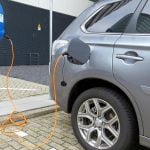Source:Supplied
When Holden’s current Colorado ute launched in mid-2016, the brand championed its far improved ride and handling over the previous model, as well as its enhanced cabin comforts.
So where does that leave its predecessor? Did trumpeting the new ute’s chassis engineering and uprated kit mean the predecessor was, well, a bit rubbish?
Yes and no. Certainly the current Colorado has sharper style, a better cabin and infotainment, improved ride comfort and insulation plus electric power steering.

Sharper styling: 2014 Holden Colorado. Picture: Supplied.Source:Supplied
Introduced in 2012, the Colorado subsequently gained a new engine, transmission and plentiful upgrades.
For this guide we’ll stick to the most popular 4WD pick-up variant over the cab-chassis (4WD/RWD) and Colorado 7 SUV, also 4WD.
In the series sold from mid-2014 to mid-2016, variants were the Space Cab (extended cab with rear-hinged doors for the back bench) in LTZ trim or Crew Cab (double cab) in varying grades — LX, LS, LS-X, LT, LTZ, Storm or Z71.

Genuine off-roader: Holden Colorado. Pic: Supplied.Source:Supplied
All came with a 2.8-litre turbo diesel that was quieter than its predecessor and six-speed manual or automatic. Outputs were decent against its ute competition, with 147kW and 440Nm (manual) or 500Nm (auto) to help with off-roading, easy cruising or towing.
The segment-topping 3500kg towing capacity was of huge appeal.
Scoring five stars from ANCAP, the Colorado was a credible family vehicle with full length curtain airbags to go with the driver, passenger and front side impact bags. Added active safety gear included trailer sway control, hill start assist and descent control.
Colorados sold before August last year won’t match the cabin fit and finish, or inclusions, of those in showrooms now — expect hard plastics plus basic seat fabric and ambience that are more work truck than car-like.

The Colorado was at home on the rough stuff. Pic: Supplied.Source:Supplied
Storage was very practical with dual gloveboxes, dash-top bin, deep door pockets and armrest bin — a proper work cabin.
Infotainment came as a seven-inch touchscreen with an older (and lesser) version of Holden’s MyLink connectivity, enabling Bluetooth, Siri Eyes Free for iPhone, and such embedded apps as Stitcher.
From late 2014, LTZ models came with a comfort suspension package, improving the ride on urban roads. Seek one of these if your Colorado will be a city slicker.
You’ll find more LTZ grades on the used market than anything else. Expect tastier items such as 17-inch alloys, climate control, chrome interior and exterior flashes, alloy sports bar, LED tail-lights, side steps and reversing camera. Electric heated leather seats were a $1500 option, so look for these when shopping.

The cabin was more work vehicle than passenger car. Pic: Supplied.Source:Supplied
In September of that year a Colorado Black Edition came with bad boy black exterior trim. A special edition LTZ Crew Cab-based “Storm” came in February, with heated leather seats and black sports bar and nudge bar.
The Z71 halo model arrived four months later with grey 18-inch wheels, heated leather seats, nudge bar, Z71 graphics and plenty of gloss and matt black trim.
Four months on, there was limited run of 750 LS-X examples with 16-inch alloys, alloy sports bar and fog lights — in effect, a better dressed and cheaper variant based on the LS.
The style of the higher-spec Colorados certainly won fans and all can hold their own off-road and when towing.
The steering, ride comfort and interior finish felt a generation old against the quality rivals: Toyota HiLux, Ford Ranger and VW Amarok.
WHAT TO LOOK OUT FOR
You’re far more likely to find Colorado 4WDs with battle scars from beach or camping pursuits than the worksite. Crew cabs are typically lifestyle rather than work choices, more so the showier LTZ and Z71 versions.

Watch out for battle scars from off-road excursions. Pic: Supplied.Source:News Limited Network
Colorados that have had an easier life around town should be cleaner, less knocked around and more appealing to used car buyers.
Sand and mud not properly cleaned off the underside is a red flag that it’s perhaps not been that well cared for. Check underneath also for damage to the chassis, axles, fuel tank and bash plates. Dents here suggest a hard life, and corrosion can set in even in such recent examples if damage is left unrepaired.
Lots of people buy these lifestyle utes for their rugged image, and there are plenty on the used market with such desirable dealer-fit or aftermarket add-ons as wheel and suspension upgrades, bull bars and snorkels. You may find one pre-modified to your taste or planned use.
Don’t consider a Colorado of this age that shows potential issues. These should have been addressed in recalls and under Holden’s three-year new car warranty — target utes with some warranty remaining for extra insurance.
Owners often report excessive oil consumption. Another recurring complaint is about the bugs in the MyLink infotainment.
IAIN SAYS 2.5 STARS
The older Colorado still has some appeal, not least to late model 4WD ute buyers on a budget.
OWNERS SAY
Alan Andrews: I’ve had no problems with my LTZ except with the aircon. I mainly use it for towing and as the family car and does both well. At times you can forget you have a caravan behind you.
Greg Mouland: I had a Crew Cab LTZ ute until trading it on a Ford Ranger last year. The Colorado was an excellent vehicle. The engine was noisy at idle but fine on the highway.
AT A GLANCE
HOLDEN COLORADO 4WD 2014-16
PRICE NEW $37,990-$57,190
SAFETY Crew Cab 5 stars, Space Cab 4 stars
ENGINE 2.8-litre 4-cyl turbo diesel, 147kW/440Nm (auto 500Nm)
TRANSMISSION 6-speed man, 6-speed auto; 4WD
THIRST 7.9L-9.1L/100km
TOWING 3500kg
THE EXPERTS SAY
Holden sold 36,000 examples of the Isuzu-built Colorado between 2014 and mid-2016, of which 31,000 were four-wheel drive.
The 4WDs account for 78 per cent of used listings, virtually all of them are dual-cabs and more than two-thirds are automatics.
There have been three recall notices issued for the Colorado.
A base Colorado single-cab rear-drive from 2014 ($28,390 new) is now worth $20,900 for a vehicle in good condition having covered 20,000km a year.
The flagship LTZ crew-cab 4WD auto of the same year ($52,690 new) is about $38,900.
Last year’s models are valued at $25,750 for the single-cab rear-drive ($29,490 new) and $50,100 for the range-topping Z71 ($57,190 new).
Resale value for 2016 Colorados is generally on par with the Nissan Navara and better than Isuzu’s D-Max and Mitsubishi’s Triton but lags behind the Toyota HiLux and Ford Ranger. — Red Book
[“Source-news”]






